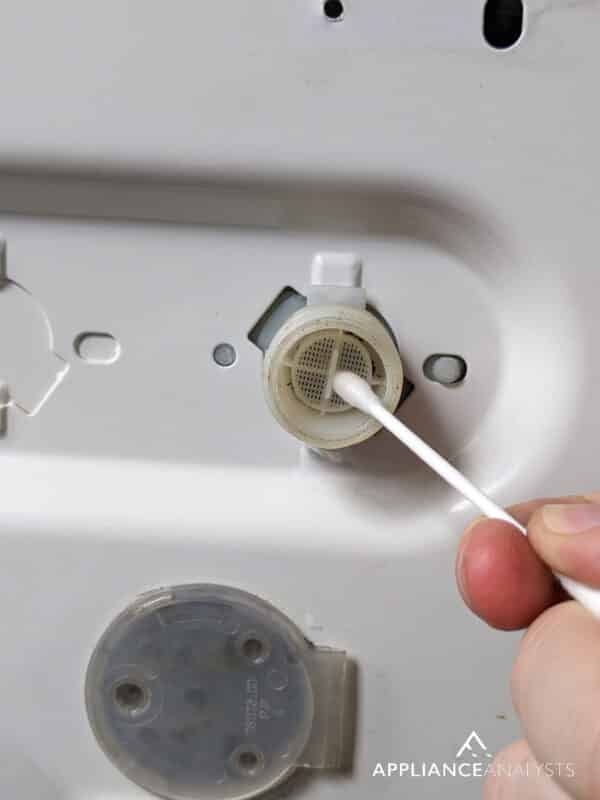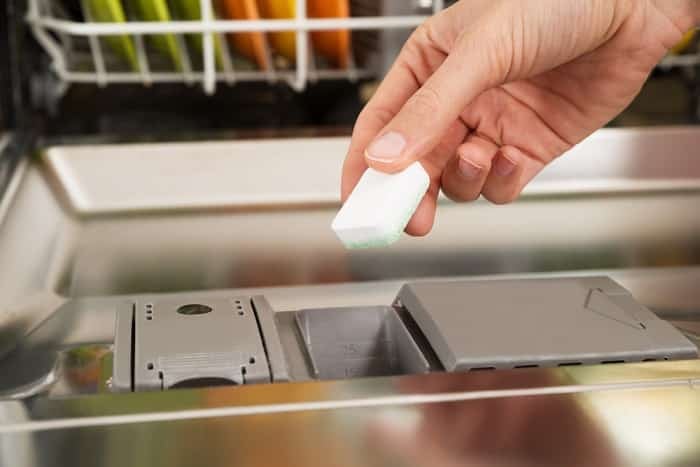We've independently reviewed this article to make sure it's as accurate as we can make it.
To find out more about our article creation and review process, check out our editorial guidelines.
Is your washer’s detergent drawer fuller than a public pool in the Summer?
You’re not alone! In fact, many homeowners face the same technical difficulties daily all around the world when trying to do their laundry.
I know how annoying it can be to have your washer’s detergent fail and fill up to the brim for no apparent reason. But don’t worry; you’ve come to the right place for answers.
Below, you’ll find a list including the main reason why your washer’s detergent drawer is a swimming pool and 3 simple things you can try to address the problem.
When your washer’s detergent drawer is a swimming pool, it can be due to inadequate water flow, a hose/filter blockage, or a clogged detergent dispenser.
Read on to drain your detergent drawer!
Why Your Detergent Drawer Is a Swimming Pool
In my experience, when your detergent drawer looks like a swimming pool, it’s typically because of inadequate water flow. Inadequate water flow can be caused by several factors you’ll need to check and address to get everything back to normal.
Here are some things I recommend you try.
#1 Check the Water Valve and Flow
The first thing you must check when your detergent drawer is a swimming pool is that the water valve is okay and the water flow is steady and has good pressure.
For your washer to complete a cycle successfully and dispose of detergent normally, it needs water that meets certain conditions. If your home’s water supply is clogged or the washer’s water valve is damaged, you will surely encounter several issues.
Solution: To ensure there’s adequate flow of water into your washer, please follow the steps below:
- Turn off the valves at the wall where the water supply is.
- Carefully remove the washer hoses from the back of the appliance and place them into a bucket.
- Open the water valves at the wall again and see how water flows from the hoses. If you notice that there’s not enough pressure or volume, there’s likely something wrong.
- Repeat step 1, disconnect the hoses from the wall outlets and test them without the hoses connected.
- If the flow of water improves, there’s likely something obstructing the hoses.
Provided there’s a good flow of water from the wall outlets and the washer hoses, my usual advice is to check your washer’s inlet filters next.
#2 Clean the Inlet Valve Filters
When your washer’s detergent drawer is a swimming pool, it’s not uncommon for dirty or clogged inlet valve filters to be to blame.
The inlet valve filters are installed between your washer’s hoses and the inlets where water flows into the drum for a laundry cycle. The filters are in place to prevent debris, limescale, and any other unwanted object from entering your appliance and causing damage to it or your clothes.

However, I’ve found that if you often fail to clean your inlet valve filters, they can become clogged, obstructing the free flow of water and causing your detergent to pool in its drawer.
Solution: You should check your washer’s inlet filters at least once every 2 months or once every month if you live in an area with hard water (excess mineral content). To clean your inlet valve filters:
- Remove the first plastic screen with needlenose pliers or a small pick – even if it gets a little damaged, it doesn’t need immediate replacement.
- Clean the screen if dirty.
- Check for a second metal mesh screen behind the plastic one. If present, remove, clean, and replace the screen.
Provided the filters are now clean, and your washer’s detergent drawer is still a swimming pool, the last thing you’ll want to check are clogs in the detergent dispenser.
#3 Check the Detergent Dispenser for Clogs
Lastly, let’s consider clogs in the detergent dispenser as another possible reason why your washer’s detergent drawer is a swimming pool.
Sometimes, even if all the detergent has been dispensed after a cycle, leftover water can point toward a clogged dispenser, in which case, you’ll have to take a closer look at the situation to determine what to do next.

Solution: To check your washer’s detergent drawer for clogs, please follow the steps below:
- Pull out the detergent drawer.
- Disassemble the drawer as necessary and thoroughly clean it, ensuring that all components are clear of any obstructions or residue.
Provided you’ve already tried all the solutions below, and your detergent dispenser is now squeaky clean, your problem should be gone, and you’re now ready to do a full load of laundry!
Washer Good Practices
Now that you know what’s causing your washer’s detergent drawer to look like a swimming pool, let’s recap some good practices that can help prevent this and other issues from arising in the future.
- Clean Your Washer Frequently: Washers and all other home appliances benefit from timely cleaning and maintenance. To prevent clogs in your washer’s hose, inlet valves, and detergent dispenser, remember to clean the appliance at least 4 times a year.
- Check the Water Valves First: When faced with detergent dispensation or pooling issues, remember to go from external to internal factors. Start by checking your home’s water supply, then move on to the hoses, and leave the inlet valves and their filters for last to save time and effort.
Draining Your Washer’s Detergent Drawer
That about covers it!
When your washer’s detergent drawer is a swimming pool, it’s understandable that you feel frustrated that you can’t do laundry and worried that you’ll have to pay for expensive repairs.
Luckily, as I hope this piece has helped you better understand, addressing the most common causes behind a washer detergent drawer that looks like a swimming pool is often easy. In most cases, something as simple as cleaning the detergent dispenser and the water inlet valve filters will do the trick.
Thanks for reading. If this article was useful and answered your most burning questions, please check out our other resources below and consider subscribing to our newsletter.
Have a wonderful week!
-Craig.







